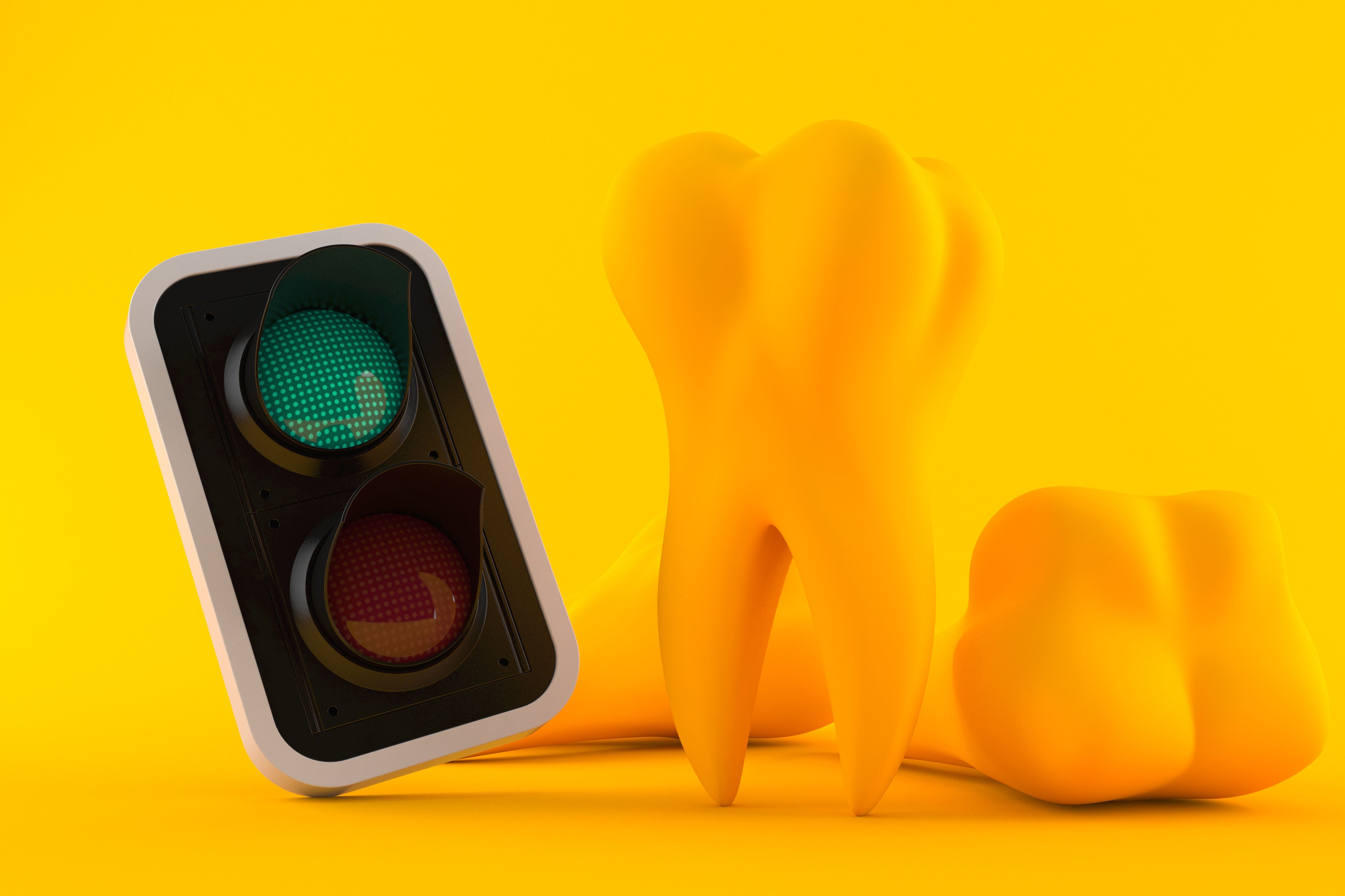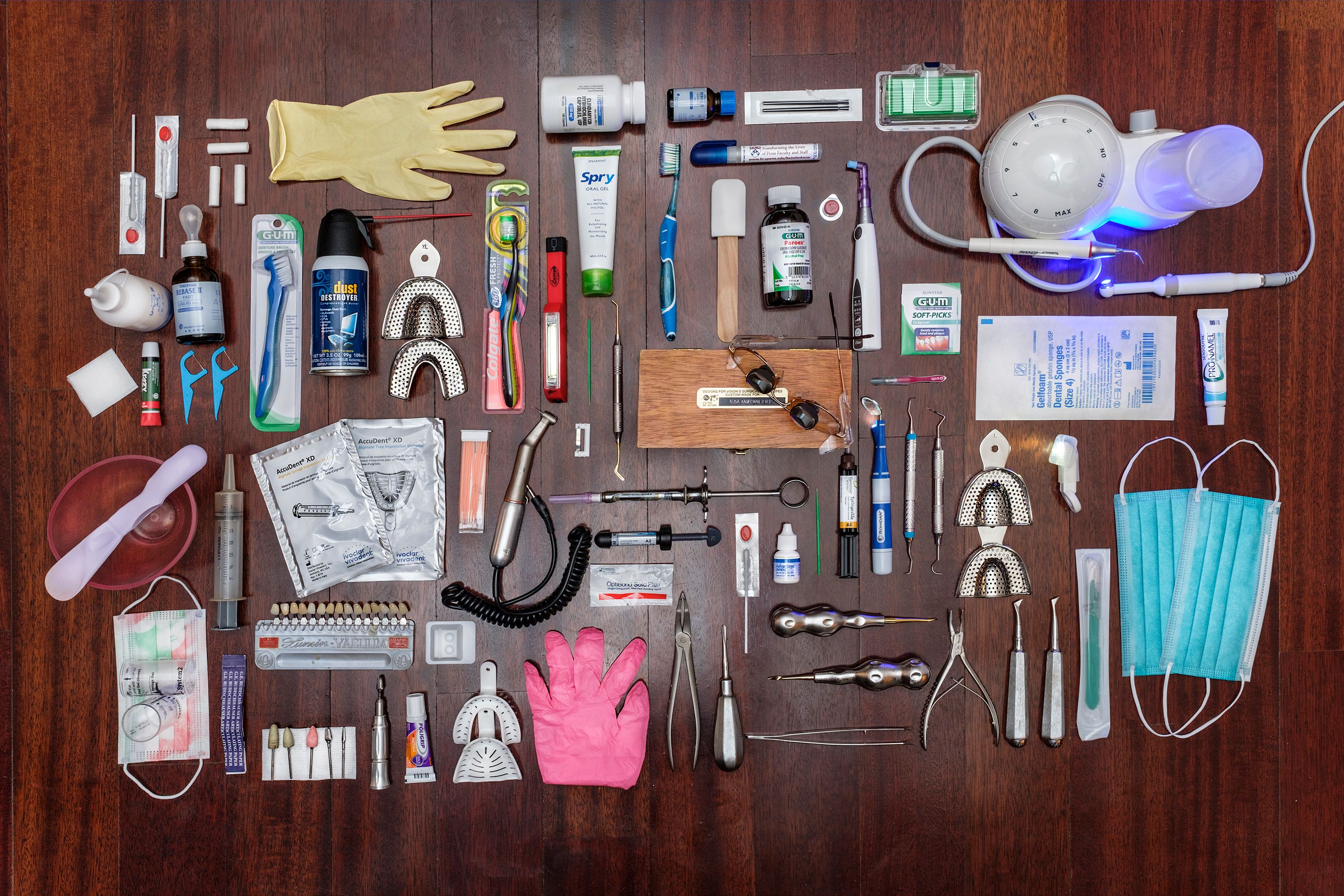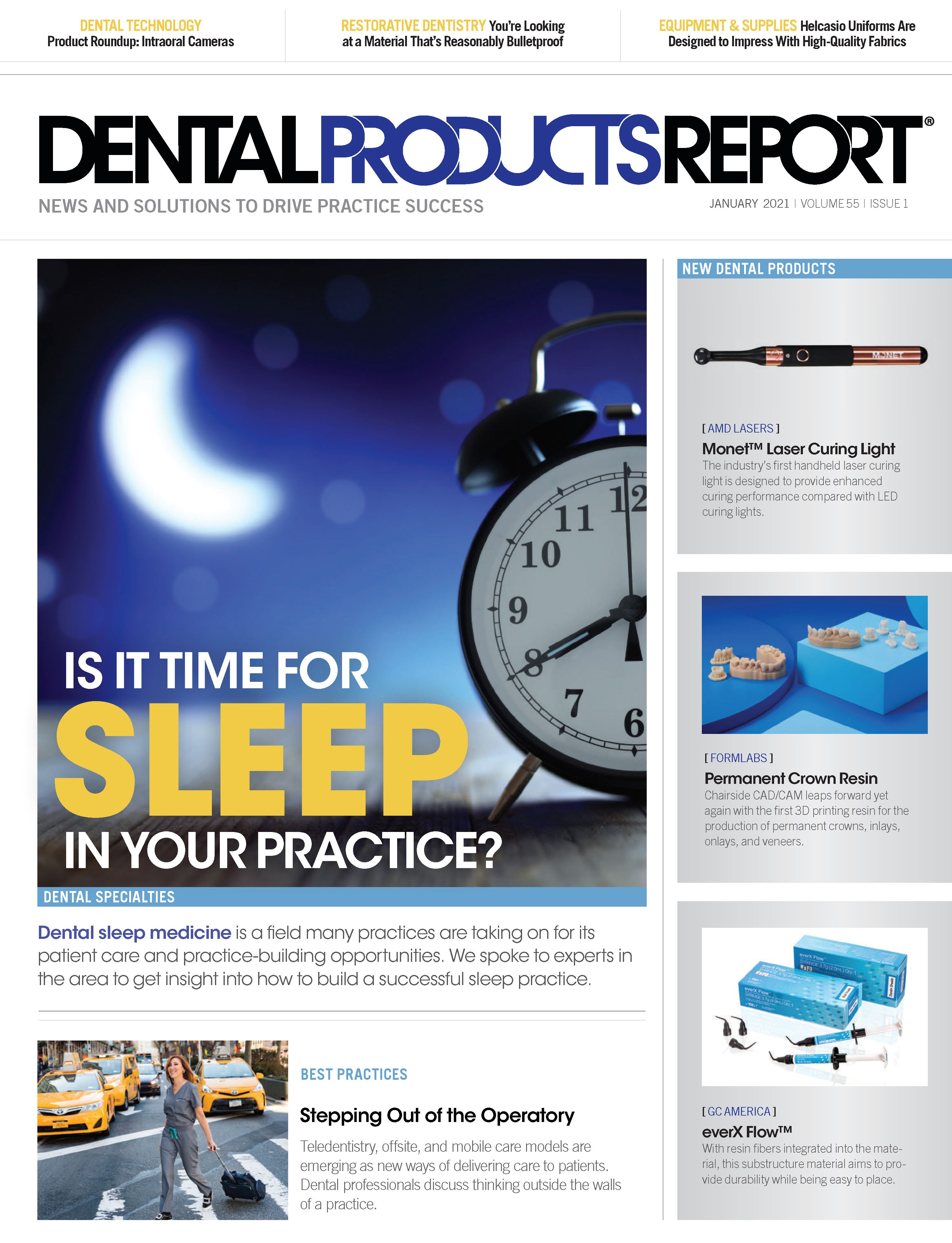Stepping Out of the Operatory
Teledentistry, offsite, and mobile care models are emerging as new ways of delivering care to patients. Dental professionals discuss thinking outside the walls of a practice.
TALAJ / STOCK.ADOBE.COM

As newer models such as teledentistry, offsite, and mobile care have emerged, the landscape for delivering care to your patients has evolved. Could it be time to reexamine how you practice dentistry, and explore your options outside the practice walls?
Maybe, maybe not; it depends on the dental practice. However, if you have not done so recently, it is worth considering. Several dental professionals discussed what they know about stepping out of the operatory.
Working Your Passion Without the Overhead
Alisa Kauffman, DMD, has been stepping out of the operatory for 35 years. Her organization, Geriatric House Call Dentistry, allows dental professionals to practice dentistry without the overhead and headaches associated with a traditional brick-and-mortar practice. She says mobile dentistry is an excellent way for new dental professionals to start a practice. Other candidates are dental professionals transitioning into retirement or who have sold their practices but want to generate income. She also sees mobile dentistry as an excellent option for working parents in the dental profession who want more control over their schedules.
“You could take your life back,” Dr Kauffman says. “You never miss a day in your child’s education, or have to worry about missing a daytime performance. You can have a vacation whenever you want. You answer to no one but yourself, and it’s fun. You get to see how people live.”
Alisa Kauffman, DMD, has been stepping out of the operatory for 35 years.

Dr Kauffman uses her house call dentistry practice to serve her passion for treating the underserved senior population. She limits her practice to elderly patients who cannot get to a dental office. Some of her patients have Parkinson disease and Alzheimer disease or other forms of dementia. Having treatment in their homes makes such patients feel more comfortable and alleviates the need for sedation in most cases.
“It’s a great way to treat the underserved population, where they traditionally could only be served if they were in an oral surgeon’s office getting sedated,” Dr Kauffman says.
Teresa Waite, LD, is a denturist in Oregon who also is in the Geriatric House Call Dentistry network with Kauffman. She says visiting patients’ homes is, in many cases, better for their safety. Her biggest fear when working with patients is transferring people out of their mobility aids.
“When people come in wheelchairs and walkers, you realize how many booby traps there are. All those little 2-inch steps getting in and out of doors are everywhere. I have seen a lot of patients trip,” Waite says, adding that most times she has patients stay in their wheelchairs when she makes house calls.
As a denturist, Waite does not have many of the same concerns as some house call dental professionals. She says her most significant issue is cheek retraction for the patients, but there is usually a caregiver to help. Other than that, she says, making house calls is not complicated, and is relatively fast.
“I am really in each location only 15 or 20 minutes, a half hour tops,” Waite says. “It’s super convenient and safer for the patients, and nice for me not to be stuck in the office all day—and saves a ton of money on the overhead.”
Joy Poskozim, DDS, PC, is a dentist in Chicago and part of the Geriatric House Call Dentistry network. She gained personal experience with the need to treat seniors in the comfort of their homes when her grandmother required a new lower partial denture.
A selection of the equipment and materials a dental professional will want when providing care outside the operatory.

“Gram felt so guilty she couldn’t come to my office, I decided to call what I did for her ‘easy chair dentistry,’ ” Dr Poskozim says.
Once her grandmother’s friends at church saw her new teeth, Poskozim says, the calls started coming from fellow parishioners whose aging family members needed help. Poskozim learned that, often, caretakers need help with oral hygiene care for their loved ones.
“Oral hygiene instructions are very, very important, and a huge part of an at-home dental visit. Dental care is rarely discussed among family members when their loved one has other, more pressing issues, like keeping diabetes in check, medications in order, and other crucial caregiving to keep them stable. The mouth is often left out of the overall health equation. Oral care can be as simple as some over-the-counter dry mouth products, and a daily regimen,” Dr Poskozim says.
Dr Poskozim, who has been a house call dentist for more than 10 years, is spreading the word by guest speaking on caregiving podcasts, and also training assisted care facility staff. She looks forward to helping compile a dental manual for caregivers, nursing home administrators, and allied agencies to emphasize the importance of oral care.
“If mouths are unhealthy, we cannot eat,” Dr Poskozim says. “Oral health is overall health.”
Dr Kauffman estimates that it might take around $20,000 to get set up for doing house calls, which is significantly less than the cost of opening a dental practice, estimated at $500,000 by the American Dental Association.1 In addition to good lighting and an extension cord (the longer, the better), Dr Kauffman recommends getting Genoray’s Bluetooth x-ray unit, which sends images to your phone and weighs only 3.3 lbs. She also recommends Arrest Silver Diamine Fluoride by Elevate Oral Care. Dr Kauffman says she also appreciates her portable prophy polisher, and gives samples of toothpaste and oral rinse by CloSYS Silver for patients 55 years and older. Waite likes her RAM electric handpiece, which she calls indispensable, and Zhermack SpA materials, particularly the impression trays and alginates, for her work in patients’ homes. Waite also says the Dr. B Dental Solutions line of products is excellent for patients with dry mouth.
Dr Kauffman feels so passionately about the importance of taking dentistry out of the operatory that she wrote a book on it, How to Become a House Call Dentist, to help dental professionals get started. Moreover, there is a network of providers that are part of Geriatric House Call Dentistry.
“This service,” Dr Kauffman says, “is one that could be everywhere in the country.”
Using Teledentistry to Open New Ways to Communicate
Brant Herman, CEO of MouthWatch, says the current climate indicates that, in many ways, dentists should consider new approaches to business. Although all practices need to develop what works for them, Herman says there are some important considerations.
“If a practice can find a path that keeps patient care high, provides communication and access, and builds loyalty without impacting clinical outcomes through more convenience to the practice, you improve not only the patient’s health but the patient’s experience,” he says.
The periodic exam/evaluation can be handled differently today with teledentistry platforms, according to Herman. For example, the hygienist does the prophy and uses images to document the state of the oral cavity. Then, after the cleaning, or even at the end of the day at home, the dentist can review and share findings via videoconference. This virtual plan increases patient convenience and practice productivity, Herman says.
“You have a cost-savings aspect where now you’re preserving PPE [personal protective equipment], and you’re not changing out of a full gown, mask, face shield between 1 room to the other. Also, the patient is not sitting there waiting for the doctor, who is knee-deep in a crown prep, for 10 minutes to have the dentist come in to say, ‘Everything looks good,’” he says. “And that path to revenue is still there. They can still bill for those services without having to compromise care, all while making it a lot better.”
Herman recommends teledentistry connections to extend the reach of practices to pediatricians, urgent care facilities, medical professionals, or anyone else who may benefit. It can also facilitate new referral relationships.
“Before getting a knee or hip replacement, orthopedic surgeons are telling patients to go in for a dental evaluation. So, why not be the practice that gets that referral?” Herman says.
Practices should consider teledentistry as a starting point for improved communication with patients and other dental professionals, Herman continues. A practice can branch out through new patient emergency consults and postoperative check-ins with the patient via the website’s patient portal. Existing and new patients can fill out an online intake form and upload images, and the practice can follow up with a referral or schedule an appointment.
Herman also sees the front office staff using teledentistry to review benefits with patients by sharing their screens, or the hygienist using it to follow up recommendations for home care. These new communication methods have excellent patient experience outcomes, and help brand the practice as technologically advanced.
“A lot of practices think teledentistry is the service, and it’s not. It’s a tool that allows the provider to communicate with their patients in a cool way,” Herman explains.
During the coronavirus disease 2019 (COVID-19) pandemic, teledentistry has allowed patients to do their prescreen at home, Herman says. Suppose the practice can consult without any additional risk to the patient, who could be elderly or immunocompromised. In that case, the office can serve those patients safely in their own homes without raising their anxiety about a dental office visit. The staff can also send the new office procedures for COVID-19, so they don’t have to repeat such reviews all day with patients.
However, Herman says, these are short-term solutions that teledentistry provides. The team at MouthWatch would like to see teledentistry enhance the dentist-patient workflow. For example, not every patient is keen to have a videoconference, and neither is the dentist. Asynchronous messaging allows the dentist and patient more flexibility with their time while addressing patient needs.
“TeleDent is integrated for that,” Herman says. “You can go right from a patient submitting a form to a back-and-forth with the patient via messaging. And if you need to, you can jump on a videoconference and screen share, and if you don’t, you close out the case, and you’re done.”
Herman says MouthWatch designed TeleDent “to meet patients where they want to be met,” which is on their mobile phones. Videoconferencing happens through the mobile browser, and the phone’s camera can take photos to send to the doctor. MouthWatch is also working to integrate TeleDent with practice management systems such as the Dentrix suite of services and Open Dental Software. Moreover, Herman says, they built the TeleDent platform for teledentistry.
“If you take [Doxy.me] or you take Zoom, you are getting 10 percent of what you can do with teledentistry. You are getting a videoconferencing tool—that’s it,” Herman says. “Doctors need to look at teledentistry as more than a flash in the pan or a way to spend a week in the Caribbean. Teledentistry is going to be part of how your practice engages with patients.”
Innovate to Extend the Reach of Your Care
Stepping out of the traditional operatory setting can increase access to care for patients, while expanding hours, reach, and revenue for dental practices, says Jamie Collins, BS, RDH-EA, a practicing clinical hygienist in Idaho and Washington, and a speaker and author on the dental profession.
“It’s a win-win for patients and providers,” Collins says.
Nontraditional care venues serve the community better, she explains. Examples include local fairs providing essential screening that refers back to the clinic, and establishing medical-dental collaboration with other providers. Collins says stepping out of the operatory brings preventive care to people who otherwise could not obtain it.
“One of the most underserved populations that we see is the long-term care facilities for geriatrics, where there are people who are the most in need and the most at risk,” Collins says.
Applications for teledentistry exist in everyday practice, too, she adds. Suppose the hygienist captures data and images from the patient’s oral cavity. In that case, the dentist can review from a computer and consult via teledentistry from the office, whether synchronously or asynchronously. This process allows hygienists to keep working, even when the dentist isn’t available that day. Teledentistry can also help reach patients who are reluctant to visit dental offices for fear of contracting COVID-19. The consult can happen at home to see if the patient needs to come in or can handle the situation with home care.
“Maybe it’s your 92-year-old grandmother,” Collins says. “Do we want her to come in if you can put it off because it’s nothing pressing? Teledentistry gives options to make those calls but also ensures that we catch something before the patient ends up in an emergency [department] with severe swelling or worse.”
Teledentistry, Collins says, is also excellent for preventive care. From monitoring to screening, teledentistry helps detect problems in the oral cavity early. Collins recalled how a pediatric dentist helped parents relax about swelling in their child’s mouth using photos sent from a mobile phone through a Health Insurance Portability and Accountability Act-compliant patient portal.
“It’s amazing what a patient can capture with an iPhone and a little bit of direction,” Collins says.
However, she believes there are some misconceptions about teledentistry. Some dentists might think that patients would not like it as well as they would a face-to-face consult. However, a patient survey from August published in the British Dental Journal suggests that isn’t true. Of the survey respondents, 100% of telephone consultation patients and 97% of virtual clinic patients strongly agreed or agreed that they could express themselves clearly and directly, as they would in person.Moreover, 94% of virtual clinic patients said they would use it again, and 100% of telephone patients said they would use it again.2
Another misconception about teledentistry is that insurance doesn’t pay for it. This could be because some dental practices think they need to use a standalone code for teledentistry for insurance reimbursement, according to Collins.
“When you’re looking at your evaluation codes, like limited eval case management or anything like that, they’re always used in conjunction with teledentistry. Dental insurances are reimbursing for those as well,” she says. “If the practice is getting a denial, it means they are using a code for teledentistry alone, and they are not using a compatible code.”
Dental professionals have delivered dentistry the same way for decades. Collins advises them to think outside the box. “Being able to expand care can be very profitable and provides the satisfaction you get from bringing care to people that may not have access to it in the first place,” Collins says.
Lean on Your Fellow Practitioners for Guidance and Support
Thomas Lovinger, president at Golden Age Dental Care and foundational board member for the American Mobile and Teledentistry Alliance, says mobile dentistry is a growing industry that provides a great solution for many health care issues. For example, patients who delay preventive dental care often end up with a disease, hospitalization, emergency department visits, and, in some cases, death.
After 9 years in the industry, Lovinger says, a significant reason is that it is difficult for some patients to get into a brick-and-mortar dental office. Later, they could end up in emergency departments, costing the health care system a significant amount of money.
“Mobile dentistry and teledentistry is not the ultimate solution to all of our health care issues. But if we make preventive dental care easier and more accessible, people will be more routine with their 6-month checkups and cleanings and whatever is needed,” Lovinger says. “Then, that would reduce all the other issues that we see due to poor oral health in this country.”
Lovinger and his team at the American Mobile & Teledentistry Alliance saw a need for collaboration and dialogue for mobile and teledentistry proponents. One of their priorities is to accumulate data to show the difference it makes to the health care system in providing this care for people who might otherwise lack it.
They also want to show how these models can provide a more affordable solution in caring for specific populations than brick-and-mortar dental care can.
“There are a lot of benefits that we are trying to pull together and advocate for a cause to grow the industry,” he says of the alliance.
Lovinger says the new technology available allows for mobile dentistry, helping dental professionals serve patients and the community better than traditional methods of delivering care. Even if dentists are hesitant to adopt it in the short-term, it’s a significant benefit in the longer-term. Lovinger also believes more dental professionals will choose mobile dentistry careers than those in the past.
“You’re going to see a great portion of them go into a different part of dentistry where there is a need, and that is mobile dentistry,” he says.
Dentists considering mobile dentistry should be well prepared before seeing patients, Lovinger advises. There are different safety and patient care concerns, as well as imperative quality assurance standards.
One way to prepare, Lovinger says, is to join the alliance. The team has prepared many policies and procedures for its membership. Moreover, there are networking opportunities and support. As Lovinger says, their alliance operates on a philosophy that “a rising tide raises all boats.
“You can meet people who are established in the industry and can help coach you along the way to opening up your new practice because, yes, it is a challenging new world, and it’s not the smoothest around the edges because it is in development,” Lovinger says. “But there are people who are happy to help. I’m happy to help coach and mentor people getting started.”
